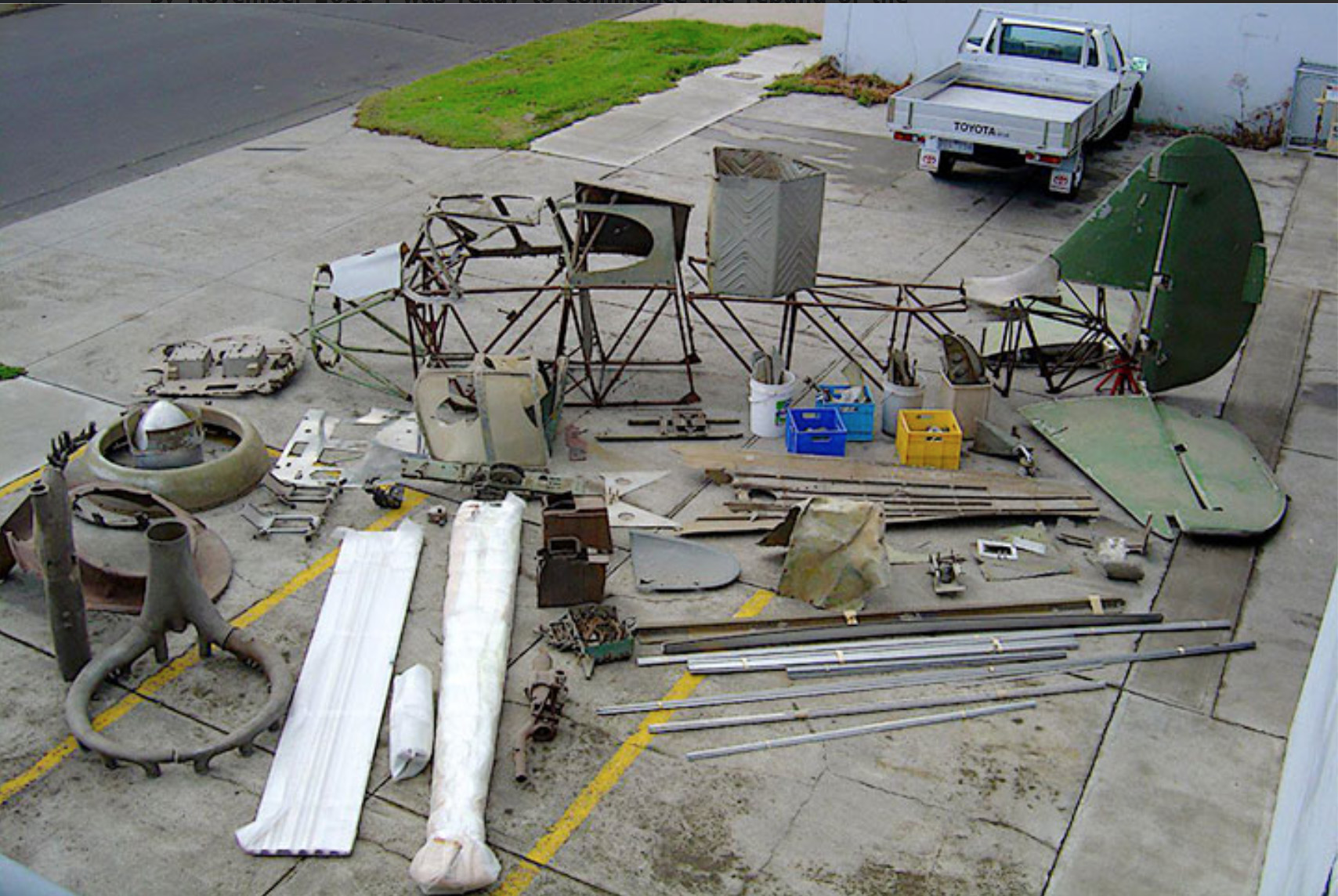
Based upon an article by John Parker of Warbirds Online. All photos via John Parker, unless noted otherwise.
John Parker recently visited Ian Baker in Sydney, Australia to chat view his collection of warbirds, but especially to take a look at the two rare Commonwealth CA-12 Boomerangs he has under restoration. The diminutive fighter is not well known outside of Australia, but it played a critical role defending Australia in the early days of the Pacific War.
The Boomerang was an indigenous design, born solely out of need in a desperate time. Traditionally buying their aircraft from Great Britain, Australia found these were in short supply because of Britain’s own needs fighting the war in Europe and the same situation applied to the United States. So Australia had to look to its own manufacturing capabilities for a solution. And it had to come up with the solution in record time. The result was the Boomerang, a type which married the center section and other components of the CAC Wirraway trainer with a new rear fuselage and outer wing panels. It included a more powerful Pratt & Whitney R-1830 Twin Wasp built locally under license for the Australian variant of the Bristol Beaufort, itself built under license by DAP in Australia. Interestingly, the Wirraway was based upon the North American NA-16 whose ultimate development was the T-6 Texan. The chief designer for the Boomerang program was an Austrian refugee named Fred David who had, in a bizarre quirk of fate, worked for both the German manufacturer Heinkel and the Japanese manufacturers Mitsubishi and Aichi before the war. With that experience, he was well aware of the technologies available to the opposing sides. Even with many parts already in manufacture, there was still an enormous amount of work to do and it took about nine months before Boomerangs were in low-rate production. The first front line unit stood up in April 1943. They performed well, for an early-war fighter, but were clearly outclassed by the time they entered service, and didn’t serve in the fighter role for long. They did, however, perform a very useful role in close air support for Allied troops on the ground, particularly during the Bougainville Campaign.
After the war though, little thought was given to the Boomerang, and only one complete example survived into preservation. However, a number of the steel fuselage frames survived in various scrap yards and dumps, and it is from these meagre remains that a resurgence of the type has emerged with three examples currently airworthy, and several others under rebuild.
Ian Baker has two Boomerang projects underway, both of them CA-12 variants: A46-89 and A46-90. Baker described the projects in his own words back in 2013…
“In 2006 I had the opportunity to purchase a CAC Boomerang fighter from Malcom Thompson of Tullamarine, Victoria. As you can see below there wasn’t much left after many people had picked it apart in the years leading up to my acquiring the aircraft. However, I was lucky to have a complete matching fuselage frame, identified as CAC Production No # 913/G5 A46-90. Now having the basis of a Warbird restoration project I spent the next few years collecting parts and acquiring as much knowledge as I could about the aircraft and the process of rebuilding it. With the lack of available drawings/blue prints, some things had to be reverse engineered from basic drawings and photographs.”
After gathering a critical mass of original parts, Baker started the restoration in earnest in November, 2011. His work progressed pretty rapidly, all things considered, and the fuselage was nearly complete by 2013, and now sits on its gear mated with the wing center section. During the same period, Baker also began construction of two sets of outer wing panels, using a jig to lay them out. The jig design took quite a while to develop, but Baker was more than up to the task, having a lot of experience in aircraft manufacture and maintenance.
A46-90 rolled off the CAC production line at Fishermans Bend (near Melbourne, Australia) in early 1943. The RAAF accepted the fighter in May, 1943. She joined 4 Squadron on July 17th, 1943 to replace A46-88 which had been shot down in error by a USAAF P-38 Lightning. Her time at 4 Squadron was short-lived though, as by September she was back with a reserve unit. A46-90 never saw the front lines again after that, passing through various reserve and training units, before being struck off just after the war.
Baker’s second Boomerang, A46-89 also served in 4 Squadron at the same time as -90. She was written off and salvaged for parts following a landing accident in Nadzab, New Guinea during late November, 1943. Quite how she comes to survive today is a bit of a mystery, but presumably some substantial components made their way into a patched-up airframe which found its way back to Australia after the war. Baker is focusing most of his energies on A46-90, but when he has to make new parts for her, its usually efficient to produce a second set for A46-89 as well.
WarbirdsNews is extremely grateful to John Parker for this report, and we look forwards to hearing more from him on these amazing projects in the near future. Please do check out Parker’s excellent site Warbirds Online by clicking HERE.


























